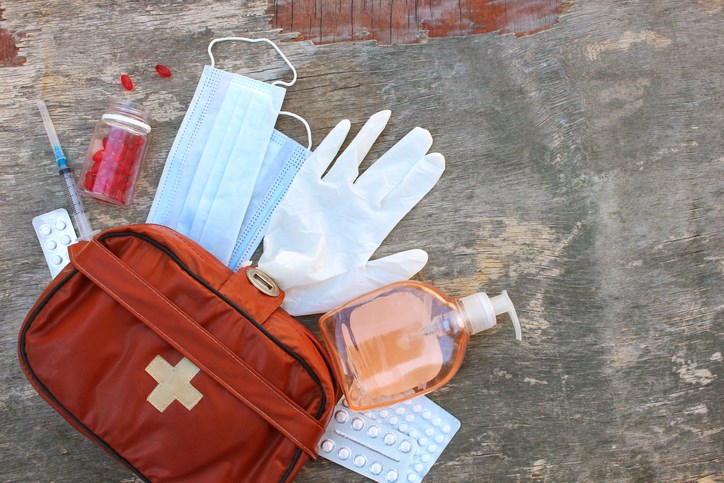If the last seven months has taught us anything, it’s to be prepared for the unexpected — whether from earthquakes, wildfires, or yes, a global pandemic.
That’s why this year in the lead up to the Oct. 15 ShakeOut BC event, St. John’s Ambulance has compiled an unabridged emergency kit inventory to stock up in times of global contagion.
First some basics.
Any survival kit should last, at a minimum, for 72 hours, though stocking up for a week and beyond is ideal. Pack enough food and water for the entire household and ensure nothing expires. While a well-supplied first aid kit is important to maintain, knowing how to use it properly is crucial.
Check to make sure wind-up or battery-powered radios and flashlights are in good working order, and maintain a cache of personalized items like prescription medication, family documents, a change of clothing and shoes, toys and games to keep kids busy, pet supplies, local maps indicating community emergency gathering points and cash.
It’s also recommended you make a personal or family disaster plan.
And what to add to see you through the COVID-19 pandemic and beyond?
St. John’s Ambulance recommends the following:
- Masks: Be prepared to have one mask for each member of your household, and extras to carry you all through at least 72 hours.
- Hand sanitizer and soap: Both of these items were in huge demand at the beginning of the pandemic, and may be hard to find during the aftermath of an emergency. Be prepared to add a bottle or two of these to your kit to last each member of your household.
- Disinfectants: In the event of an emergency, you may have to evacuate to a different location. Having disinfectants will help you keep the items and areas around you clean, which continues our efforts to stop the spread.
- Toilet paper: Another product that was in demand during the start of the pandemic and can diminish quickly during a natural disaster. Have a few rolls in your kit to last a minimum of 72 hours for each member of your household.
- Solar/portable cellphone charger: In many emergency situations, you will lose power, and a number of government emergency programs, such as the Emergency Support Services, have mobile/electronic registration. Keeping your phone charged is important to ensure you get the latest information and updates, as well as to stay in touch with emergency officials and loved ones.
Organized by the BC Earthquake Alliance Society, the annual Great British Columbia ShakeOut begins Oct. 15 at 10:15 a.m. As a training exercise, it’s meant to provide opportunities to practice the "Drop, Cover and Hold On" earthquake protocol and to help prepare for an earthquake at home, school, office or while commuting.
There are roughly 4,000 earthquakes recorded in Canada every year, with many occurring in the seismically active region of B.C. Even a magnitude six earthquake — significantly less powerful than the so-called 'Big One' — could cause significant damage to the Tri-Cities, according to the city of Port Coquitlam.
If you are seeking additional emergency preparedness training, the Coquitlam Emergency Program offers a free Personal Family & Community Emergency Preparedness session scheduled for Tuesday, Oct. 13 from 10 a.m. to 12 p.m. and run out of the Dogwood Pavilion. Pre-register at www.coquitlam.ca/emergtraining
Port Coquitlam residents can sign up for a free emergency preparedness course Nov. 25 at www.coquitlam.ca/emergtraining.



